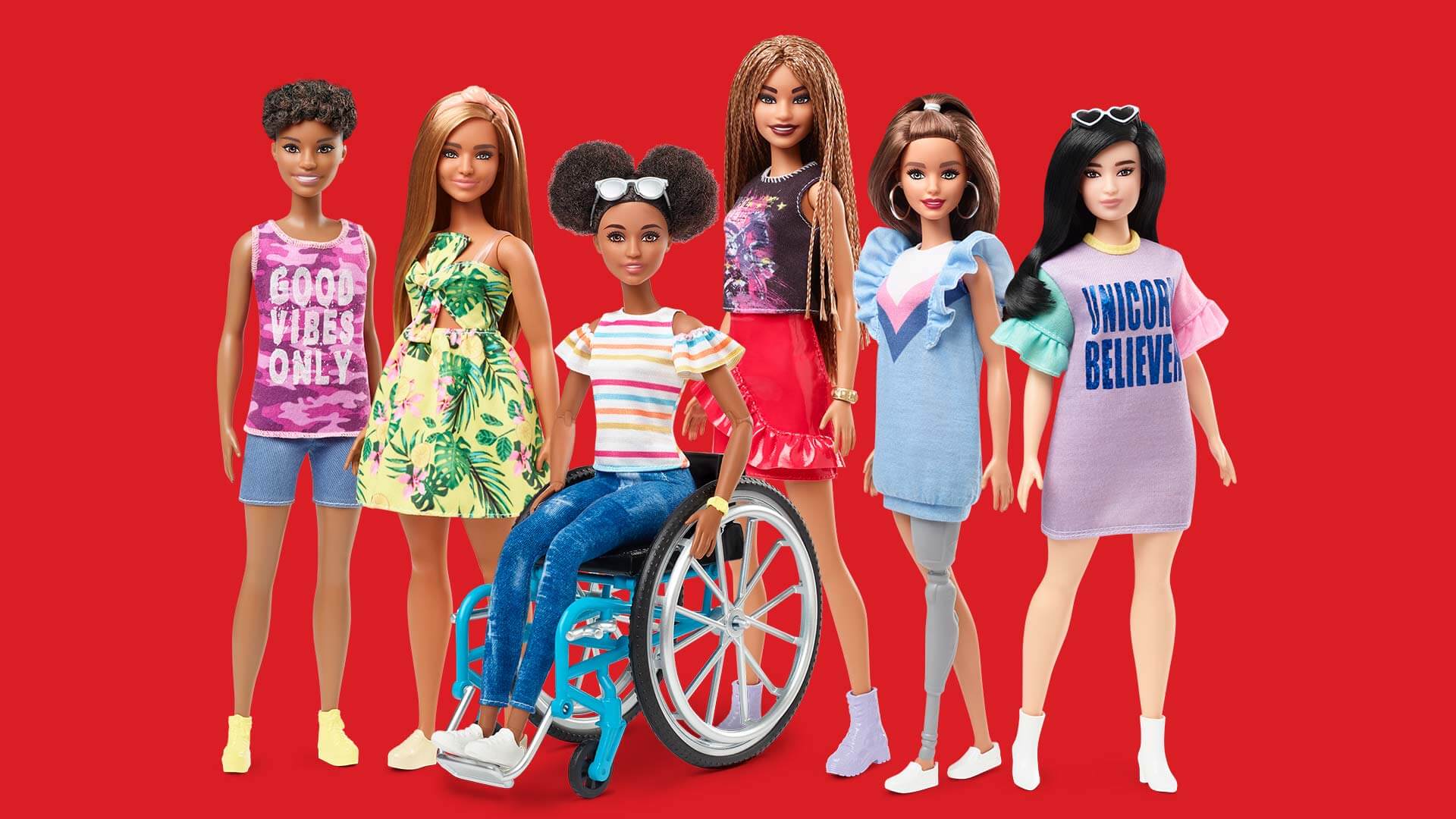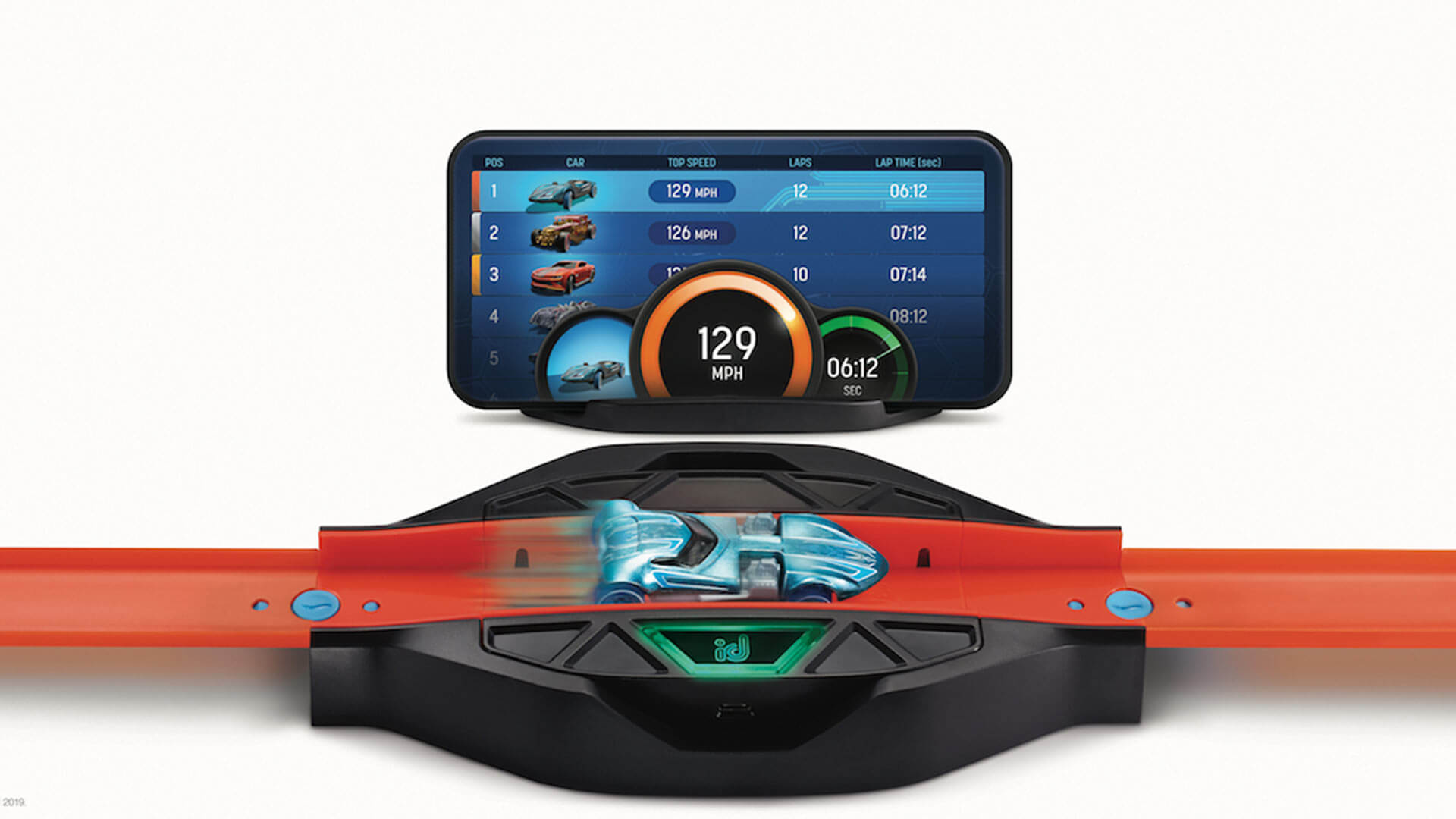- November 06, 2019
- By Daryl James
As an ambassador for the world’s largest toy company, Mattel President and Chief Operating Officer Richard Dickson ’90 discovers joy in some unlikely places. He even encounters smiles at international airports following long flights from corporate headquarters in El Segundo, Calif.
“You arrive in the country you are visiting, and the people you meet invariably ask about the purpose of your visit,” he says. When Dickson explains his link to Mattel, he sees an immediate change in demeanor. People light up with childhood memories of Barbie, Hot Wheels, Fisher-Price, American Girl or other powerhouse global brands within Mattel’s vast portfolio.
“The power of joy is universal,” Dickson says. “You realize the impact of what we do at Mattel in these moments.”
While creating joy is rewarding, Dickson underscores that the work is also hard and constantly evolving. Innovation is a hallmark of success in the toy business. And while the sparks of innovation may come from either art or science, he believes that only when the two unite do you get the game-changing ideas that characterize leading brands and organizations. And that intersection is where Dickson works every day.
He says innovation at Mattel has always been a synthesis of art and science, brought to life by a diverse and deeply dedicated team of talent. “We have world-class designers working alongside Ph.D.s in data science and psychology, each committed to the next big thing,” Dickson says.
His own role is as a self-described “chief editing officer,” who lives at the nexus of these diverse pools of talent. He focuses on making sure that every new product is “forward-thinking, compelling to our consumer, and will create the joy that is Mattel’s ultimate product.”
“Bringing art and science together in relevant ways to inspire joy is one way to describe what Mattel does,” he says. “It is much easier said than done.”
Dickson will discuss his approach during the CEO@Smith speaker series tomorrow. As a preview, he shares the following insights gained over a 30-year career that began at the University of Maryland.
Honor Your DNA
The defining feature of Dickson’s office at Mattel headquarters is an enormous wallscape of the humble garage Mattel occupied in its early days. It represents the idea factory that revolutionized the toy business, where some of the world’s most beloved toys and games were first created.
 “This inspires me to always remember the heritage that makes Mattel great,” Dickson says. “It was a creative workshop. It was an invention house. It was highly entrepreneurial. Dreaming big isn’t just for kids. It’s also essential to those of us who create for kids.”
“This inspires me to always remember the heritage that makes Mattel great,” Dickson says. “It was a creative workshop. It was an invention house. It was highly entrepreneurial. Dreaming big isn’t just for kids. It’s also essential to those of us who create for kids.”
Many of Mattel’s early creations became multigenerational brands. Hot Wheels marked its 50th anniversary in 2018. Barbie is turning 60 this year. And Mattel itself will turn 75 in 2020.
“Art drove the early success of the company,” says Dickson, who has his own entrepreneurial roots.
Before college, he began his career in his mother’s shop in New York. After graduating from Maryland, he joined the prestigious Bloomingdales training program, where he excelled in cosmetics retailing. He parlayed this expertise into co-founding an online cosmetics business and was then recruited to work for Estee Lauder. From there, he joined Mattel, reinvigorating the Barbie brand just in time for her 50th anniversary. He returned to New York as chief brands officer for the Jones Group, one of the world’s leading fashion brand portfolios. Then, in 2014, Mattel lured him back to lead the entire brand portfolio.
“When new leaders take the reins of any brand with a legacy, the first thing they need to do is understand what made that brand great to begin with,” Dickson says. The process requires a historical perspective.
“You need to get deep into the values of the brand and how those lessons are relevant for today and tomorrow,” he says. “I find it incredibly inspiring and clarifying.”
He warns against caretaking strategies, which can be a death spiral for legacy brands. “Brand management at its best is a dynamic ecosystem of things that work together to keep a brand relevant,” Dickson says. “So standing still or relishing a win for too long isn’t ever an option. We have to constantly be innovating. And really good innovation questions everything.”
Question Everything
When Dickson returned to Mattel in 2014, Barbie had big challenges. Analytics and consumer engagement showed that Barbie had lost her way with consumers, largely because she no longer reflected the world that girls were seeing every day, he says. It was clear that Barbie needed to evolve.
“From skin tone to eye color, hair color and texture, and even the iconic silhouette, we rethought everything about the doll, guided by consumer input, by data and by brilliant design,” Dickson says.
 In addition to the brand’s fashion dolls, Mattel added a line of Role Models, or “sheroes,” that celebrates women of achievement. Mattel also launched a new brand campaign for girl empowerment, You Can Be Anything.
In addition to the brand’s fashion dolls, Mattel added a line of Role Models, or “sheroes,” that celebrates women of achievement. Mattel also launched a new brand campaign for girl empowerment, You Can Be Anything.
Barbie’s renewed commitment to this purpose has guided a new initiative called the Dream Gap Project, dedicated to closing the confidence gap that plagues some girls as young as age 5. One result has been seven consecutive quarters of growth for the brand.
“Barbie is once again one of the most influential toys in the world,” Dickson says. “The most inclusive. The most diverse. And, committed to the promise of inspiring children to imagine they can be anything.”
Be Brave and Be Bold
Tweaking some fad brand is one thing. But mess with a pop culture icon like Barbie or Hot Wheels, and people react viscerally. That pushback can lead to a lot of second-guessing and hinder innovation. Dickson recognizes the trap.
“As businesses become more successful, they naturally become more risk-averse,” he explains. “All of a sudden, there are lots of voices and lots of opinions internally and externally.” In the case of Mattel, there are generations of consumer voices to consider. “It’s not only kids,” Dickson says. “But also parents and grandparents who feel vested in our brands.”
Ultimately, Dickson says, staying the course by not innovating is the riskier strategy because it guarantees irrelevance. It also betrays Mattel’s founding vision and values.
“The entrepreneurial spirit that originally made us great is what I believe we are tapping back into,” Dickson says.
Be the Tie Breaker
For decades, the toy industry was largely guided by the gut instincts of talented designers. Today’s global toy industry is a high-stakes business watched carefully by analysts and investors, and the expectations for success are higher.
“The goal with innovation is always to have as many hits as possible,” Dickson says. “It’s impossible to bat a thousand in this business, but I firmly believe that when we leverage data and insights in the creative process, we better our odds.” He’s also quick to admit that sometimes the science conflicts with the art, pointing toward different paths. “Some leaders freeze when that happens, waiting for proof of a decisive path,” Dickson says.
But successful leaders of modern organizations cannot always wait for absolute clarity.
“You synthesize the hard information combined with a good beat on your consumer, your brand, a sense of culture, and your own good instincts—and then you make the call,” Dickson says. “More often than not, you’ll take the right path.”
Immerse Your Consumer
Dickson believes that brand engagement is an increasingly important component of a successful toy brand “You want to connect the brand to its fans in ways that transcend traditional play,” he says.
 Hot Wheels’ recent Legends Tour, celebrating the brand’s 50th anniversary, is a great example of this. The tour visits Walmart parking lots across the United States and invites car enthusiasts to show off their life-size cars and share their love of car culture. Hot Wheels designers judge the vehicles for authenticity, creativity and “garage spirit,” and one lucky tour exhibitor is distinguished by having his or her car immortalized as a scaled down, die-cast Hot Wheels car for sale at retail.
Hot Wheels’ recent Legends Tour, celebrating the brand’s 50th anniversary, is a great example of this. The tour visits Walmart parking lots across the United States and invites car enthusiasts to show off their life-size cars and share their love of car culture. Hot Wheels designers judge the vehicles for authenticity, creativity and “garage spirit,” and one lucky tour exhibitor is distinguished by having his or her car immortalized as a scaled down, die-cast Hot Wheels car for sale at retail.
Dickson says the program celebrates Hot Wheels fans as artists. “It extends the play experience beyond the die-cast car and, frankly, beyond kids,” he says. “The Hot Wheels Legends Tour has been a big hit with the entire family. Nothing brings brands and fans together like a truly immersive brand experience.”
Invest in Relationships
Wherever Dickson’s travels take him, he makes time to meet colleagues, partners, policymakers and other Mattel stakeholders.
“You need to know and trust your team, and you need your team to know and trust you,” Dickson says. He is also intently focused on building relationships with consumers. “Whatever we do, the consumer is the first and most important part of our process,” he says.
Dickson’s commitment to meaningful relationships is partly why he gives back to Smith. “I love the connection that I have with the University of Maryland,” he says. “Staying in touch, giving back and, in some small way, perhaps helping develop the next generation of leaders at a place that enriched me so much.”
Dickson, who grew up in New York City, says he chose Maryland after seeing its beautiful campus in the 1985 film “St. Elmo’s Fire.”
“I wanted the ultimate collegiate experience,” he says. “Great academics. Great athletics. A diversity of ideas and people. A strong feeling of community. I wanted it all, and I got it at Maryland.”
Dickson says his degree in consumer economics was a valuable introduction to the business world. “I’ve always been intrigued with brands, creating demand and connecting with consumers,” he says. “It has defined my success, and the origins of that began at Maryland.”
Today, that skillset is helping lead Mattel to what Dickson sees as a future filled with possibility. Mattel is already making big moves taking its legacy brands beyond toys. “Art and science will drive Mattel’s transformation,” he says.
As Mattel heads toward its 75th anniversary, Dickson sees opportunities for growth in film, television, fashion, digital gaming, live events, consumer products and more.
“Mattel brands and products represent incredible intellectual property,” he says. “There is so much opportunity as we develop our toys beyond the traditional definition, into entertainment and experiential spaces where kids can play on a much bigger stage.”
